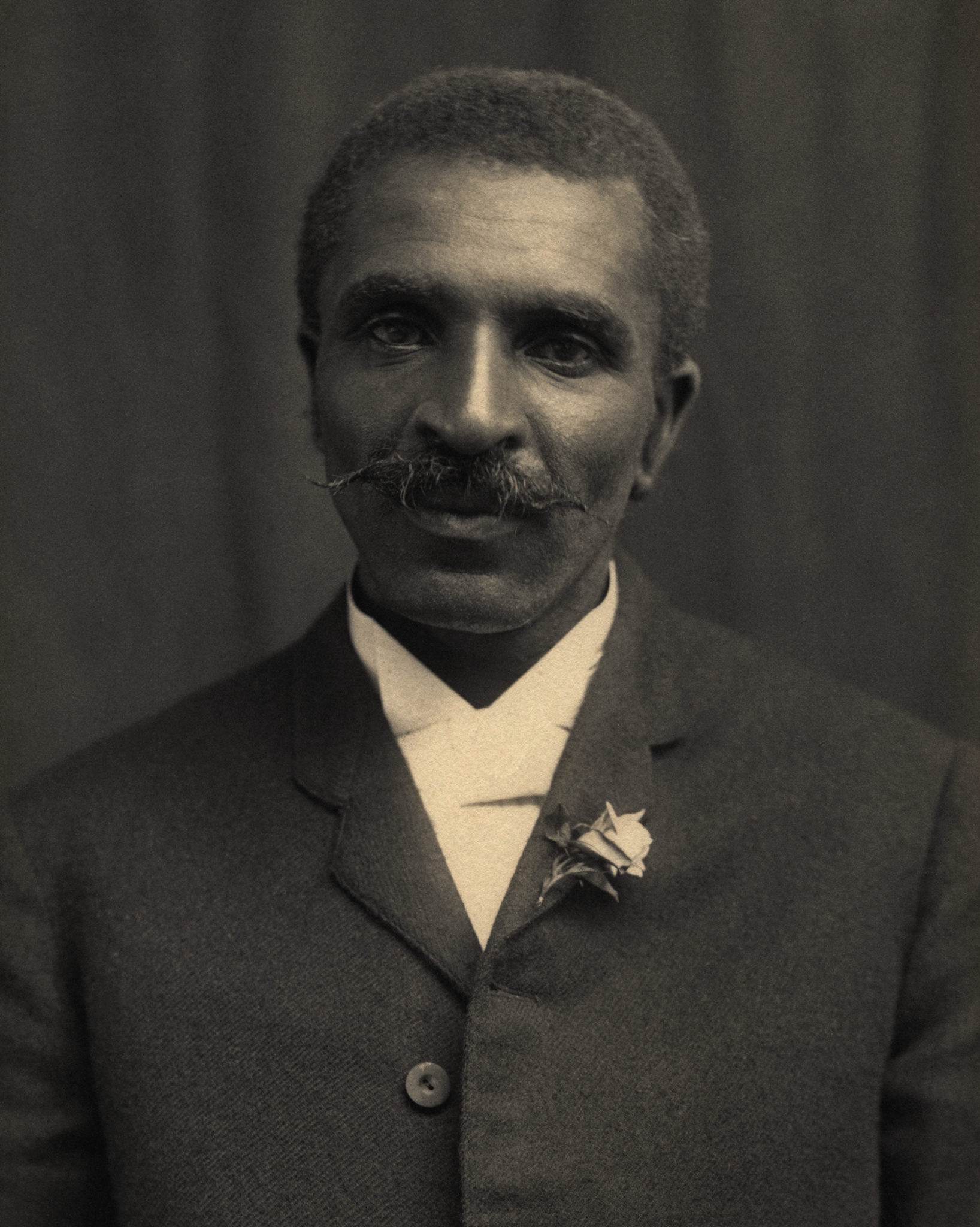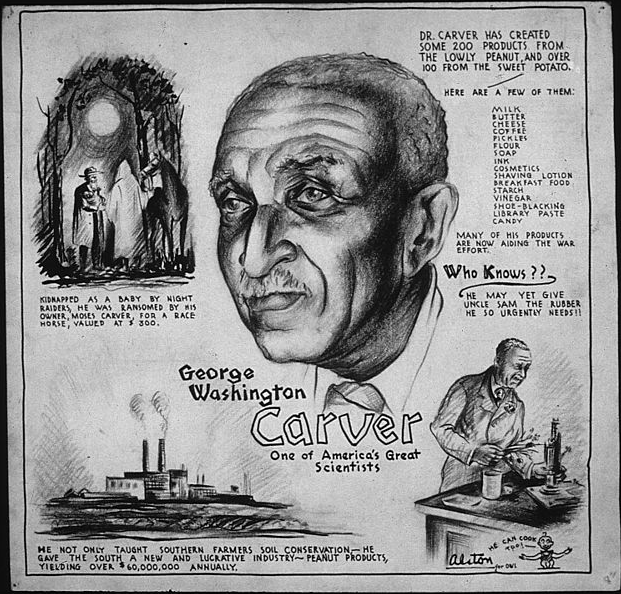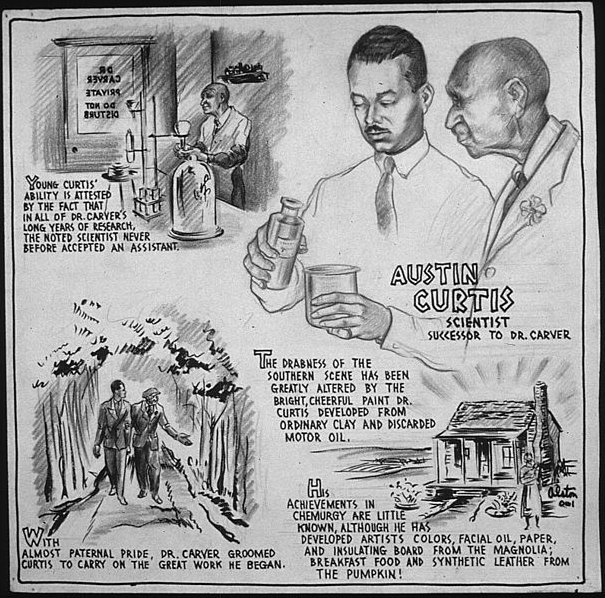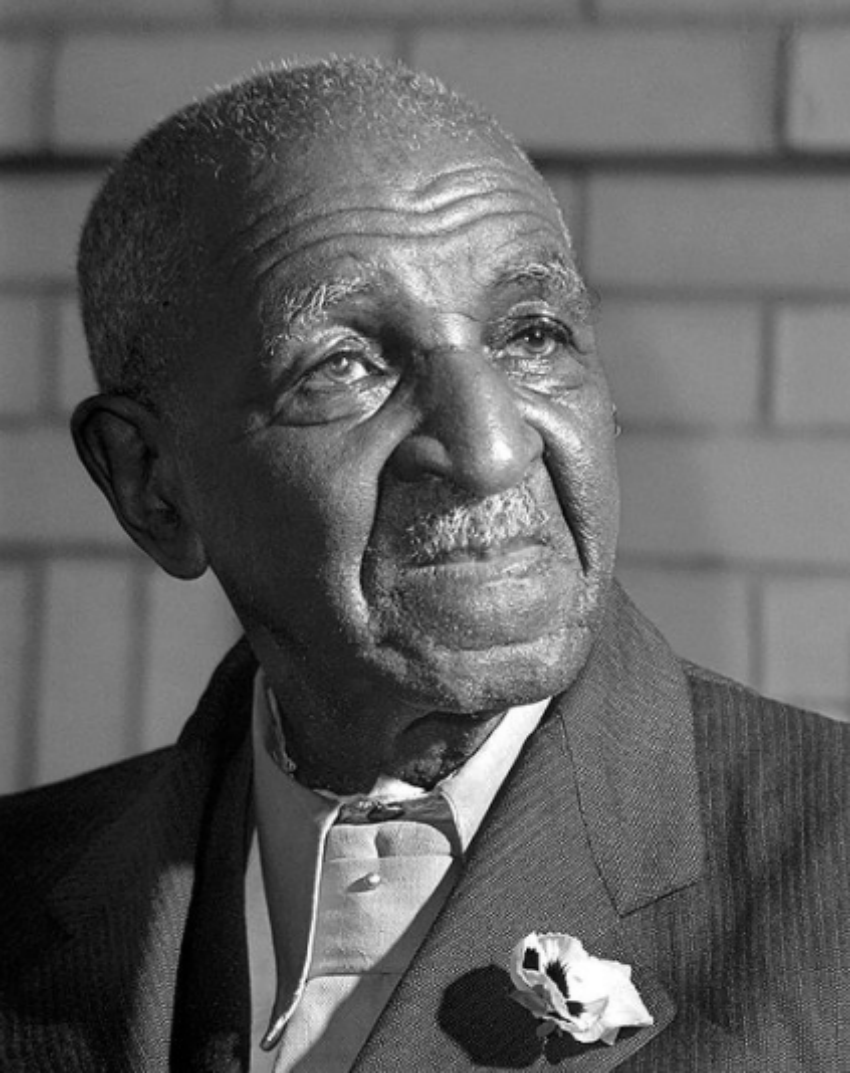Nearly every American citizen can cite at least one of the accomplishments of the inventor, scientist and ‘peanut man’, George Washington Carver, says biographer Christina Vella.
Carver dedicated himself to bettering farmers’ quality of life, improving the south’s soil quality and teaching generations of black students self-sufficient farming techniques.
While doing this, he discovered 285 uses of the peanut (unfortunately not peanut butter, as the joke about him goes). And he developed 118 products derived from sweet potato, including shoe polish.
Since his birth, Carver’s journey took many twists and turns. He was born a slave but achieved celebrity status. And despite rumours around his sexuality, he made close connections with President Teddy Roosevelt and Mahatma Ghandi among a dazzling list of society’s greatest names.
Even today, people revere George Washington Carver, 1864 to 1943, as one of the ‘greatest’ scientists of his time.
Here’s a brief history of the American hero.
Slavery, The Civil War and Carver’s first week on Earth
Born into slavery in 1864 in south west Missouri, Carver’s infancy was spent in one of the most turbulent times in history: The Civil War, where slavery was rampant across the United States.
Not much is known about his childhood.But we do know that slave raiders kidnapped him, along with his mother and a sister just after he was born. The kidnappers swiftly negotiated with his mother’s masters and they returned him ‘home’ to Kentucky.
Mysteriously, only George returned to slave owners Moses and Susan Carver. There is no record of his mother and a sister’s whereabouts after their kidnapping.
George was one week old at the time.
As a result, the Carvers adopted George, and his brother James, who had escaped the kidnapping. They raised them both as their own after slavery was abolished in 1865.
George Washington Carver (front row, center) poses with fellow faculty of Tuskegee Institute in 1902 | Photo: Wikimedia Commons
The genesis of an American hero, George Washington Carver
At 13, Carver left home to study at a school for African-Americans.
In 1890 he studied at Simpson College, Iowa, where he was the only black student. One year later, he transferred to Iowa State College to pursue his passion for agriculture where he earned a masters degree.
After graduating, he became the only black member of the Iowa State faculty. In 1896, was invited to head the agriculture department at the Tuskegee Institute, a university for black students founded by Booker T Washington.
He started to work on ideas to improve agriculture. In particular, he developed ways to vary what crops were grown on a piece of land. This restored the soil, which in turn meant cotton would grow better. And that was worth a lot of money.
As a result, Carver began rubbing shoulders with the greats of American history, in the public eye and in Congress itself.
He realised peanut crops were particularly useful in restoring the soil. But in 1896, peanuts weren’t even recognised as a crop in the United States. Carver would change this by inventing 285 uses of the peanut including peanut milk, paper and soap.
By 1920 there were enough peanut farmers to form the United Peanut Association of America (UPAA). In 1921 the UPAA asked Carver to speak to Congress on their behalf about the wide uses of the legume.
It was Congress who fondly dubbed Carver, followed by the general public, as the ‘Peanut Man’.
Carver remained at Tuskegee Institute for 47 years; the genesis of his American icon status.

A restored photo of George Washington Carver from 1910 | Photo: Wikimedia Commons
5 fun facts about George Washington Carver
1. Carver was well-connected to some of history’s greatest trailblazers; three US presidents and the founders of today’s biggest corporate giants
While President Teddy Roosevelt admired Carver’s work publicly, the founders of giant brands, including Henry Ford and Dr John Harvey Kellogg, revered his work. Henry Ford and Carver became close friends.
Carver also briefed two more US presidents, Calvin Coolidge and Franklin Roosevelt.
He even turned down a six-figure job from Thomas Edison, inventor of the lightbulb.
2. National tributes to Carver include a monument, commemorative stamp and nuclear submarine
Honors were bestowed to Carver between 1923 up until as recently as 2007.
Most noteworthy honors include a half-dollar coin, state park and museum. An entire day, George Washington Carver Recognition Day, also pays tribute, falling annually on 5 January since 1944.
3. Carver was inducted into the Hall of Fame for Great Americans and the National Inventors Hall of Fame
Also, in 2000, Carver was a charter inductee in the USDA Hall of Heroes as the ‘Father of Chemurgy’. Chemurgy meaning ‘the chemical and industrial use of organic raw materials’.
4. Carver spoke with an usually high pitched voice
While there are many theories as to why Carver spoke with such a high pitched voice.
Many say the ravages of whooping cough as an infant damaged his vocal chords, others cite castration. Historians highly dispute the castration story, however.
Consequently, Carver’s high pitched voice didn’t stand in the way of him becoming one of history’s greatest people.
5. In 1941, TIME magazine named Carver the ‘Black Leonardo’
They also named him, in the language of the time, the ‘greatest Negro scientist alive’.

World War II poster, circa 1943, describing George Washington Carver as a national hero | Photo: Wikimedia Commons
Was George Washington Carver really bisexual?
Carver’s relationships were turbulent and full of rumour; at 40 he dated a woman for three years, and lost another female companion to suicide.
While Carver never married, he was the constant companion of scientist Austin W Curtis Jr. from 1934 until his death in 1943.
It is claimed Carver and Curtis would walk around campus at Tuskegee arm-in-arm on their way to check on their experiments.
It is also said, and widely agreed by historians, he actively rebuffed all match-making efforts by his friends.
As a result, people also suspected his enjoyment in giving ‘therapeutic’ peanut oil massages to handsome men meant he might be a homosexual. University colleagues also claim he would ‘horse around’ with many men.

A cartoon, by C.H. Alston, depicting Curtis as ‘paternal’ Carver’s successor
This is all hearsay, of course. Carver never revealed his sexuality and none of his lovers spoke of it.
It is commonly accepted among historians and biographer, Christina Vella, who reviewed his relationships in in-depth detail, he was bisexual.
Many have also claimed he didn’t marry because his masters had castrated him at a young age. The widely disputed rumour says his masters, Moses and Susan Carver, castrated him during his childhood days of slavery to prevent him ‘de-flowering’ their white daughter.
Carver willed his assets to Austin W Curtis Jr. when he died.
The death of George Washington Carver
In 1943, Carver returned home one day and took a fall down a flight of stairs.
A maid found him unconscious and took him to hospital. He developed anaemia as a complication from the fall and died on 5 January of that year.
Buried next to his long-standing colleague, Brooker T Washington, Carver’s grave stone read:
‘He could have added fortune to fame, but caring for neither, he found happiness and honor in being helpful to the world’.

George Washington Carver in 1942, one year before his death | Photo: Wikimedia Commons







